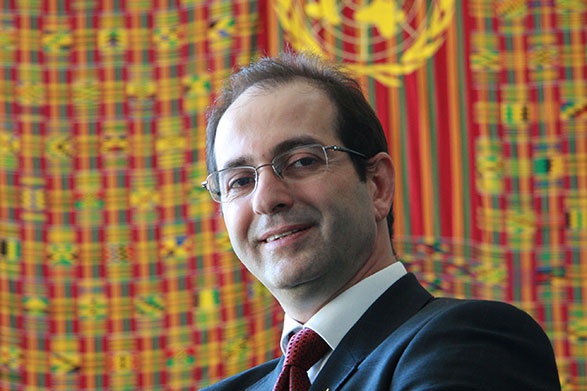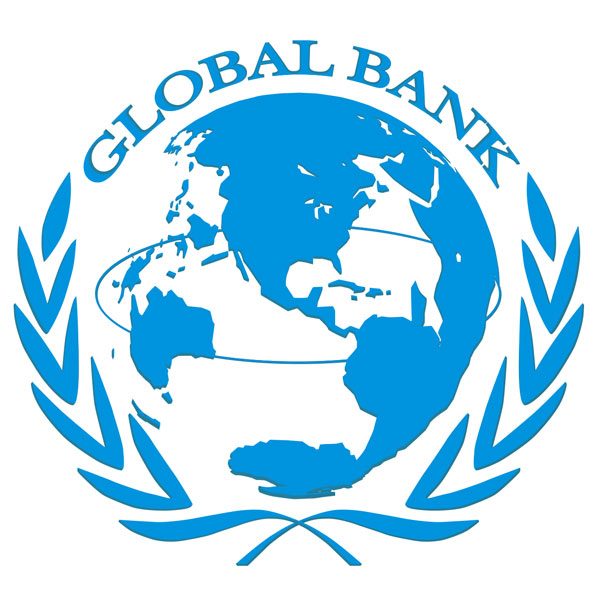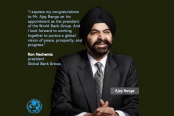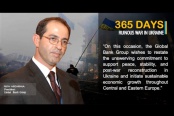
Los Angeles, CA – October 13, 2019 – This year on International Disaster Reduction Day, the Global Bank Group and its partners invite private-sector infrastructure project developers, investor-owned utility and governments to “Step Up for Disaster Risk Reduction in Infrastructure” as populations need to be protected against natural and climate-related disasters, even as hazards are expected to increase in frequency and intensity over time. The President of Global Bank Group, Ron Nechemia’s message for 2019 International Day for Disaster Risk Reduction is “Build Better Before” a natural hazard becomes a disaster.”
Every year the Global Bank Group (@GlobalBankGroup) joins with the global community in marking 13 October as the International Day for Disaster Reduction (IDDR) to raise awareness of the importance of managing risks, especially to life, prosperity, and portfolios.
This year’s theme is based on Target (d) of the Sendai Framework for Disaster Risk Reduction 2015-2030: ‘Substantially reduce disaster damage to critical infrastructure and disruption services, among them health and education facilities, including through developing their resilience by 2030’.
Ron Nechemia (@RonNechemia), the President of the Global Bank Group, issued the following statement on International Day for Disaster Risk Reduction on 13 October:
“Natural hazards are severe, extreme weather and climate events. Although they occur in all parts of the world, some regions are more vulnerable to specific hazards than others. Natural hazards become disasters when people’s lives and livelihoods are destroyed. Every year, major earthquakes, floods, fires, and hurricanes occur. These natural hazards disrupt daily life and, in the worst cases, cause devastation. Events such as the 2010 Haiti earthquake, the 2004 Indian Ocean earthquake and tsunami, the 2005 Hurricanes Katrina, the 2011 Tōhoku earthquake and tsunami, and the 2012 Hurricanes Sandy killed thousands of people and generated billions of dollars in losses.
“When natural hazard strikes, infrastructure can be a deciding factor in whether or not the situation becomes a disaster. In the way of example, roads can provide access to supply relief aid to affected communities quickly; but if roads are not designed to be sustainable in the event a natural hazard strikes, entire regions can be cut off from support. The most significant cautionary tale comes from private utilities. The chronically mismanaged investor-owned utility, whose faulty equipment sparked many of the worst fires in California in 2019, was driven into bankruptcy earlier this year after being found liable for damages. But the social, political, and financial ramifications of the wildfires rage on.
Investing in resilient infrastructure
“Public and private investment in disaster risk prevention and reduction through structural and non-structural measures are essential to enhance the economic, social, health, and cultural resilience of persons, communities, countries, and their assets, as well as the environment. These can be drivers of innovation, growth, and job creation. Such measures are cost-effective and instrumental specific losses and ensure effective recovery and rehabilitation.
“Climate change presents enormous challenges and opportunities for development, making it essential that climate and development be tackled in an integrated way. The world needs to feed 9 billion people by 2050 while reducing emissions, increasing carbon sinks, and ensuring climate-resilient food security. “It needs to provide affordable energy access to the 1.1 billion people worldwide who still live without electricity while keeping emissions to a minimum and managing a transition away from fossil fuels. New research suggests that over 4 billion people already experience severe water scarcity during some part of the year, and climate change will increase water stress in many regions. Countries will have to provide access to mobility using resilient and low-carbon transport modes and systems.
“Cities will have to welcome 2 billion new urban dwellers with livable, energy-efficient dwellings, low-carbon transport, good jobs, and appropriate access to services while reducing vulnerability to natural hazards. Populations need to be protected against natural hazards, even as hazards are expected to increase in frequency and intensity over time. And $90 trillion in low-carbon, climate-resilient infrastructure investment will be needed by 2030—mostly in developing countries. Building more resilient infrastructure is essential to adapting to climate change and disaster risk reduction, but is also likely to increase upfront costs, even though it will be cost-effective in the long run.”
The President of Global bank Group Ron Nechemia’s message of “Build Better Before,” which resonates with the philosophy and guiding principle of Global Bank Group of Building Better Before a natural hazard has turned out to be a disaster, instead of “Build Back Better” which is the current state of affairs.
DRRRF Investing in resilient infrastructure
Reducing disaster
The Global Bank Disaster Risk Reduction and Reconstruction Fund – An Umbrella Trust Fund helps strengthen the security and resilience of critical infrastructure, for the continuity of essential national functions, and to organize itself to partner effectively with and add value to the security and resilience efforts of critical infrastructure owners and operators.
The Global Bank Disaster Risk Reduction and Reconstruction Fund prepares projects in a manner that fits the developmental-driven mandate of Global Bank in the infrastructure sector, namely, to deliver outcomes focused on commercialised approaches, private sector participation, strong environmental and social standards and energy efficiency improvements across the sector.
Effective Post-Disaster
Reconstruction of Infrastructure
The Global Bank Disaster Risk Reduction and Reconstruction Fund – An Umbrella Trust Fund, in collaboration with the Global Bank, a long-term sovereign lending institution, and the Global Finance and Investment Corporation, a long-term non-sovereign lending institution, each part of the Global Bank Group (the “GB Group”) – and in the context of the Bank Group’s Forward Look, has drawn up plans to support the global climate goals emanating from the Sendai Framework, Sustainable Development Goals (SDGs), and the Global Climate Agreement in Paris during COP21. In the Global Bank Disaster Risk Reduction and Reconstruction Fund, the Global Bank Group will strive to increase the share of adaptation and mitigation co-benefits, improve resilience by further mainstreaming climate change and disaster risk reduction in country programs, encourage investments in climate-smart infrastructure, promote climate-smart cities and agriculture, and further refine and design contingent instruments to deal with disaster risks.
References
- United Nations General Assembly Session 44 Resolution 236. International Decade for Natural Disaster Reduction A/RES/44/236 22 December 1989. Retrieved 2008-09-18.
- United Nations General Assembly Session 56 Resolution 195. International Strategy for Disaster Reduction A/RES/56/195 21 January 2002. Retrieved 2008-09-18.
- United Nations General Assembly Session 64 Resolution 200. International Strategy for Disaster Reduction A/64/200 21 December 2009. Retrieved 2011-10-14.
GB-DRRRF links
- Disaster and Climate Risk Assessment
- Enhancing Disaster Preparedness for Effective Response
- Investing in Disaster Risk Reduction for Resilience
- Promoting Resilience Infrastructure
- Effective Post-Disaster Reconstruction and Recovery
- The Chairman of Global Bank Group Ron Nechemia to Lead the Global Bank Delegation at Japan's First Ever G-20 Development Working Group's Meeting
Related links







